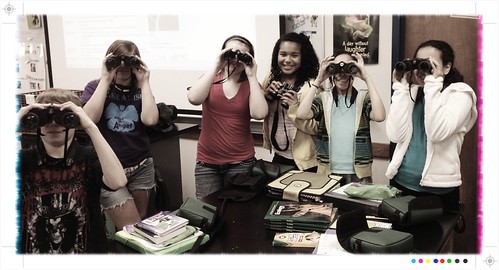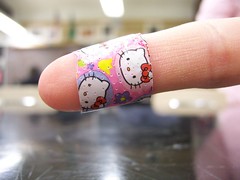Having a character act instead of react is generally better in fiction, especially when it comes to our POV characters. So, in general, it’s better to choose a POV character who’s participating in the action of a scene. But sometimes the discoveries that come from a character observing are worth the “reactive” POV character.
Constructing these scenes with POV characters that are more like narrators is a challenge. It’s easy to let our POV character disappear and simply focus on the action. However, readers can quickly forget about a narrator who never says anything—and when the narrator speaks up again, it can be a bit of a jolt. The action playing out needs to take center stage, but we also need to balance the narrator with that action, especially since the narrator’s reactions are the whole reason we’re in this POV.
Here are three steps to keep your narrator-POV character present in the scene!
Anchor the scene in the character
Have the scene start with the narrator-POV character doing something, some physical action—even something small. Opening with this anchor is a great way to establish the POV.
If we can establish the narrator-POV character well enough by showing them as an acting character, readers are that much closer to the character, and that much more sympathetic to his/her actions and reactions.
Ground the scene in the setting
The narrator-POV character must regularly observe his surroundings. This is more difficult to remember in scenes where the narrator-POV character’s observations are mostly heard, whether they’re hearing something they can’t see, listening to a transmission, or simply watching an argument.
By grounding the scene in the narrator-POV character’s observations of the setting (or the people he’s watching), we not only keep the narrator-POV character on the scene (and present in our readers’ minds), but we also keep the scene the narrator-POV character is observing grounded. Instead of showing talking heads floating in a vacuum, we can present a full scene through our narrator-POV character’s eyes.
However, stating, “Jimmy observed the large crates behind Peter,” is actually counterproductive here. Instead of being in Jimmy’s head, seeing things with him, it’s more like we’ve been kicked outside of Jimmy’s head, watching him watch the scene. Instead, we want to carefully construct the grounding to show instead tell:
A stack of large crates loomed behind Peter. Worry wore at Jimmy’s gut. This wasn’t going to end well.
Which brings us to the most important step to keeping our narrator-POV character present in the scene:
Show the character’s reactions
The point of showing a scene through a narrator-POV character is to show that character’s reactions to the scene as it happens—but sometimes it’s easy to forget to include those reactions! We need to have our narrator-POV character react with thoughts and, if necessary, even visceral reactions.
Once again, this is a balancing act. Unless the scene is very slow paced, we don’t need a reaction from our narrator-POV character every sentence, so save the wry commentary for the best moments, when it carries the most impact. At the other end of the scale, we can’t go too long without the reactions, or we give our readers that kick-me-out-of-the-story jolt when we suddenly remind them of our narrator-POV character.
I’ve found the sweet spot is every few lines of dialogue or every few paragraphs. This is one of those your-mileage-may-vary guidelines, but I like to make sure I have a reaction at least every 3-5 paragraphs (including lines of dialogue). (Some of my other personal guidelines include action/speech tags every three lines and using names every half-page or every third time I use a pronoun for the same character. That’s gold, right there, folks!)
Caveat: make sure it’s necessary
If you’re struggling to come up with reactions from your narrator-POV character, maybe it’s time to reconsider whether it’s truly necessary to show the scene through his/her eyes. If the most important thing about this scene is the action of the scene, consider showing it through one of the actors’ eyes. If the most important thing about this scene is your narrator-POV character’s reaction, then use the narrator-POV character.
Read more about choosing a POV character
An example in my work
 For one of my books, the climax of the book revolved around revealing two major secrets: the hero unmasking the murderer, and the hero unwitting revealing that he’s undercover and not who he’s been pretending to be, in front of the observer, the heroine.
For one of my books, the climax of the book revolved around revealing two major secrets: the hero unmasking the murderer, and the hero unwitting revealing that he’s undercover and not who he’s been pretending to be, in front of the observer, the heroine.
Originally, I planned to show this sequence from the hero’s eyes. I planned to have him unmask the murderer, then reveal his true identity to the murderer—and then turn and see the heartbroken heroine there, who’d fallen in love with his false pretenses. Can’t you just imagine the guilt the hero would feel? And the surprise for him (and the readers)!
But as I approached this scene, I realized I wanted to show it from the heroine’s POV, because not only would that convey all the information we’d get in the scene from the hero’s POV, but it would also show her immediate reaction—the shock and the hurt, before we get to the anger that she’d probably be at by the time we got to her POV in the next scene.
So to do this, I made sure to anchor the scene very carefully. It starts off with the heroine arriving at the scene, interacting with people, then settling down, trying to sort through her feelings on the last big event. Then the murderer and the hero arrive, not seeing her, and have their confrontation. In my first draft, I didn’t have enough of the heroine’s reactions, and it created that “oh yeah, we were in her head” jolt I’ve mentioned.
Through a couple drafts and some editorial guidance, focused on her reactions, grounded her in the scene (she was sitting, so I had her turn in the chair, grip the armrests, etc.) and strengthened her visceral reactions to keep her reaction the star of the show.
What do you think? Do you have the occasional scene where the POV character is only observing? How do you handle it?
Photo credits: Binocular bonanza—Laura Gilchrist; photographing the photographer—David Prasad



